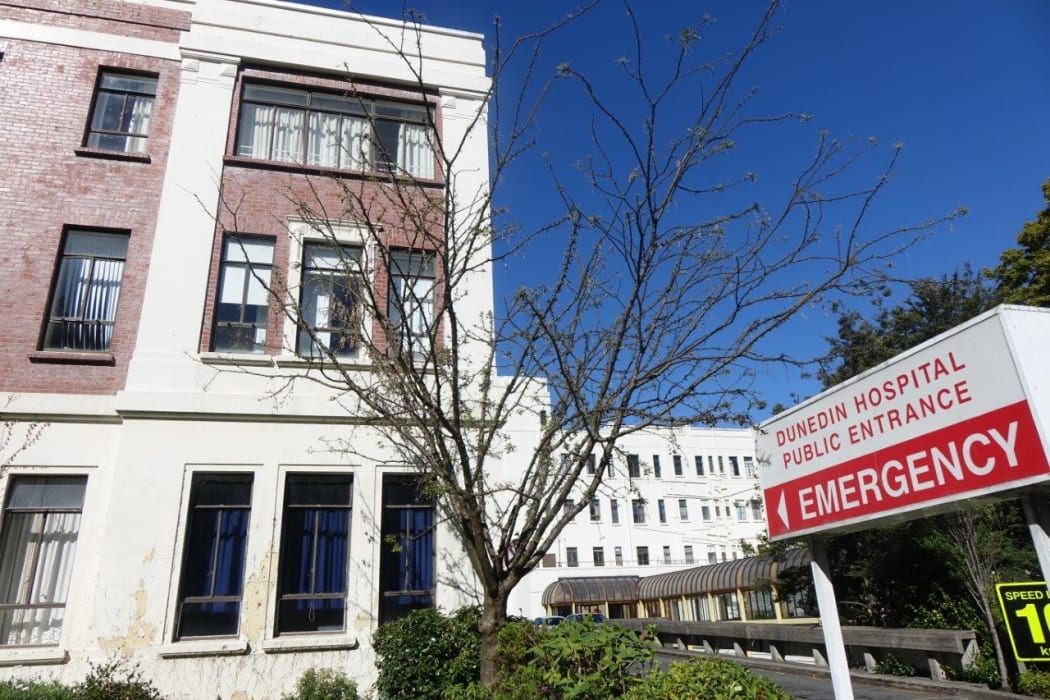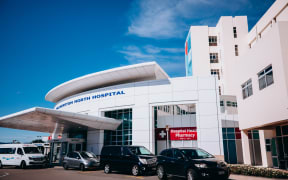Southern GPs have been warned they could be treating as many as 5000 Covid-19 patients a month within a matter of weeks, should an Omicron outbreak sweep across Otago and Southland.

Two different pieces of analysis suggest the southern region could be affected by more than 5000 cases of Covid-19 a month. Photo: RNZ / Ian Telfer
A worst-case scenario could result in about 25,000 active cases in the South at the peak of an Omicron outbreak.
Those numbers would place serious strain on primary health services and stretch the region's hospital capacity to breaking point, especially as the Southern District Health Board (SDHB) expects as much as one-third of its workforce might themselves be sick with Covid-19.
Clinicians were briefed on the predictions earlier this week, and details were provided to the Otago Daily Times yesterday.
SDHB acting quality and clinical governance executive director Dr Hywel Lloyd said modelling was a difficult exercise, especially when predicting such a rapidly-transmissible disease as Omicron Covid-19.
However, two different pieces of analysis had both suggested the region could be affected by more than 5000 cases of Covid-19.
The first set was based on a 10-case Omicron cluster in the South.
"Fourteen days later we would have a thousand cases, and another five days later, 19 days after the outbreak, we would have 5000 cases," Dr Lloyd said.
"That's how fast Omicron escalates, that's how rapid the rise in cases could be."
The second analysis examined a hypothetical Omicron outbreak in metropolitan Auckland and then scaled it to the southern region.
"In that scenario our cases per month would be about 5500 and our peak would last four to six weeks but then fall away after that.
"We have some other modelling figures that would suggest 51 days into an outbreak we would have about 2500 cases a day and 25,000 active cases total at peak, which would be about day 61."
All scenarios suggested that the South should expect more hospital admissions than the 2100 forecast in a Delta outbreak worst-case scenario the SDHB considered in November.
"That is a serious worry," Dr Lloyd said.
"But the relieving thing is that even though they are in hospital, we are not expecting them to be as sick, and a much lower percentage would need to be admitted through to ICU or need ventilation support."
The SDHB was considering alternatives if it found itself severely short-staffed, he said.
"We are going to struggle, but hopefully the number of deaths won't be anything like what we predicted with Delta [a worst-case scenario of 210 deaths]."
Australia is struggling to manage an avalanche of Omicron cases, and more than 1 million people have caught the disease in that country in the past 10 days.
Yesterday, New South Wales reported 46 deaths, its deadliest day since the pandemic began.
On Thursday, Prime Minister Jacinda Ardern said New Zealand as a whole would move to the red setting on the traffic-light system as soon as community transmission of Omicron had been confirmed.
That possibility edged closer yesterday, after confirmation that a Covid-19 case in Palmerston North was an Omicron case. That person has generated more than 30 locations of interest so far.
The Ministry of Health also advised a third case of Omicron had been detected in Auckland and, despite it being an airport worker, there was no known connection with another airport employee previously diagnosed with Omicron.
"It's going to come, there's no doubt about it," Dr Lloyd said.
"People have got to be prepared. They have got to get their medicines in, work out a support plan, and ask how will your family or neighbourhood know you are all right.
"With these rapidly escalating numbers you need to know how to access care if needed."
Southern medical officer of health Dr Susan Jack stressed that vaccination was the best protection against serious Covid-19 illness.
"With Omicron, people who are vaccinated may still have a mild illness, especially if they were vaccinated more than six months ago," she said.
"A Covid-19 booster shot increases your protection against illness, which will also help to decrease spread."
So far, 67,882 people in the Southern DHB area have received a booster, out of a possible 127,229 due.
This week, the vaccine programme for five to 11 year olds began. During the first four days, 1993 children were vaccinated in the southern region.
"The best way you can protect yourself, your whānau, and your community is by getting vaccinated, getting your booster shot if you are eligible and following public health guidelines.
"Wear your mask, wash your hands, get tested if you are sick and stay home until you receive a negative test result."
Omicron analysis
- Case 1: A 10-case Omicron cluster in the South. Two weeks later, 1000 cases; 19 days later, 5000 cases.
- Case 2: A metropolitan outbreak in Auckland, scaled to the South. About 5500 cases in a month.
- Case 3: About 51 days into an outbreak, about 2500 cases a day, and 25,000 active cases total at peak on day 61.
This article originally appeared in the Otago Daily Times.






